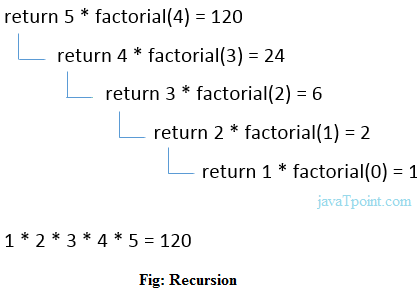C++ Recursion
When function is called within the same function, it is known as recursion in C++. The function which calls the same function, is known as recursive function.
A function that calls itself, and doesn't perform any task after function call, is known as tail recursion. In tail recursion, we generally call the same function with return statement.
Let's see a simple example of recursion.
C++ Recursion Example
Let's see an example to print factorial number using recursion in C++ language.
Output:
Enter any number: 5
Factorial of a number is: 120We can understand the above program of recursive method call by the figure given below:

Comments
Post a Comment